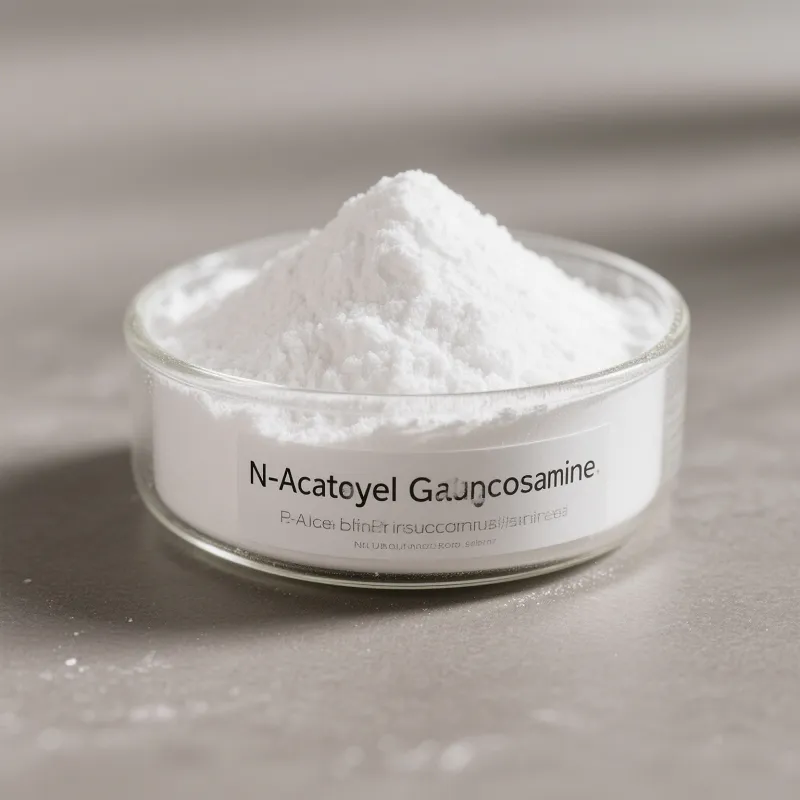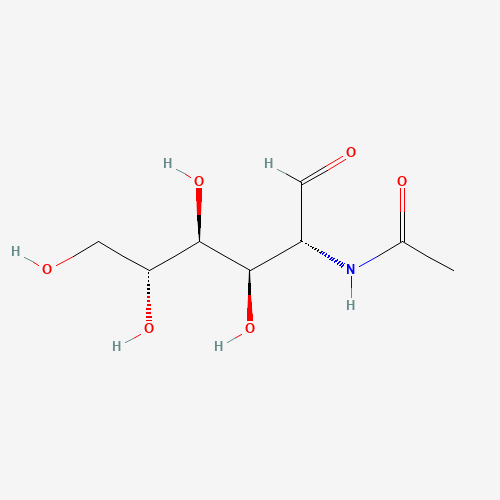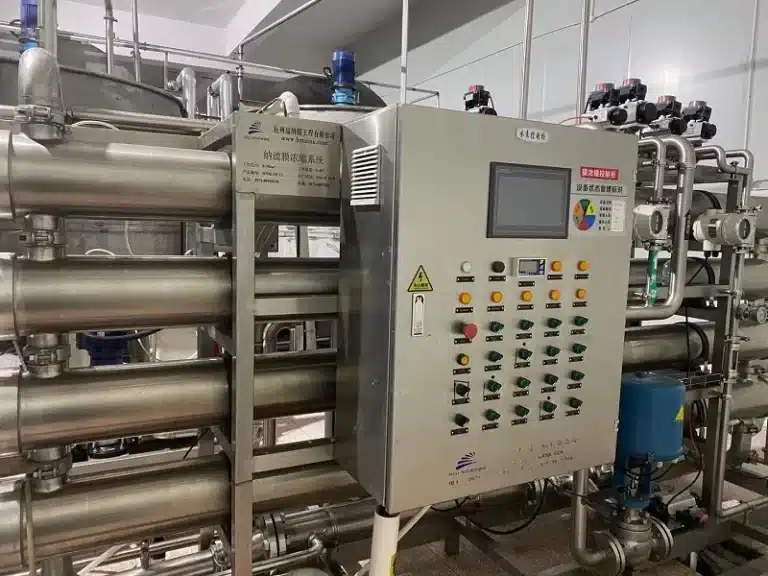
GlcNAc
Looking for a reliable source of GlcNAc (N-Acetyl-Glucosamine)? Gensei provides top-grade n acetyl glucosamine powder suitable for a wide range of applications, including dietary supplements and cosmetics. Our N-Acetyl-Glucosamine is manufactured under strict quality control measures to ensure purity and efficacy. Whether you are producing an n acetyl glucosamine supplement for joint support or incorporating it into skincare for its hydrating and skin-renewing properties, our GlcNAc powder is the ideal choice. Partner with Gensei for your N-Acetyl-Glucosamine needs and benefit from our consistent quality and competitive pricing.
Please note: We are a wholesale supplier and have minimum order quantities.
Have questions about this product? Our team is here to help. For inquiries about multiple ingredients, please use the Contact Us option and include the list of ingredients in your message.
N-Acetyl-Glucosamine CAS No.: 7512-17-6
Chemical Name: N-Acetyl-D-glucosamine
Synonyms:
- GlcNAc
- N-Acetylglucosamine
- 2-(Acetylamino)-2-deoxy-D-glucose
CB Number: CB7669586
Molecular Formula: C<0xE2><0x82><0x88>H₁₅NO₆
Molecular Weight: 221.21 g/mol
MDL Number: MFCD00069869

N-Acetyl-Glucosamine Manufacturing Process Flowchart
N-Acetyl-Glucosamine (GlcNAc) is typically produced through the acetylation of glucosamine.
(Usually Glucosamine HCl or Glucosamine Sulfate)
(Glucosamine is dissolved in a suitable solvent, often water)
(Acetic anhydride or acetic acid is added to the glucosamine solution under controlled conditions to initiate the acetylation reaction)
(The reaction mixture is stirred for a specific duration to ensure complete acetylation)
(The N-Acetyl-Glucosamine is crystallized or precipitated out of the solution by adjusting the pH, temperature, or adding a specific solvent)
(The N-Acetyl-Glucosamine crystals or precipitate are separated from the liquid using filtration or centrifugation)
(The separated N-Acetyl-Glucosamine is washed with a suitable solvent to remove any residual impurities)
(The washed N-Acetyl-Glucosamine is dried under controlled conditions to remove any remaining solvent)
(The dried N-Acetyl-Glucosamine is milled and sieved to achieve the desired particle size and consistency)
(Testing for purity, assay, heavy metals, and other specifications)
(The N-Acetyl-Glucosamine powder is packaged in suitable containers)
This flowchart provides a general overview of the N-Acetyl-Glucosamine manufacturing process. Specific steps and reagents used may vary depending on the manufacturer.
Our State-of-the-Art Manufacturing Facilities
Explore our modern facilities equipped with advanced technology to ensure the highest quality in the production of your vitamins, herbal extracts, minerals, and amino acids.











FAQs
N-Acetyl-Glucosamine (GlcNAc) offers several potential benefits, including supporting joint health by contributing to the synthesis of cartilage components, promoting skin health by aiding in hydration and reducing hyperpigmentation, and potentially supporting gut health.
GlcNAc can benefit the skin by increasing hydration, reducing the appearance of fine lines and wrinkles, and helping to even out skin tone by inhibiting melanin production. It is often found in skincare products aimed at improving skin texture and radiance.
No, N-Acetyl-Glucosamine (GlcNAc) is a derivative of glucosamine. Glucosamine is an amino sugar, while GlcNAc is formed when an acetyl group is attached to the glucosamine molecule. While both support joint health, GlcNAc also has notable benefits for skin health.
Yes, N-Acetyl-Glucosamine is a reducing sugar because it has a free aldehyde or ketone group that can reduce other substances.
GlcNAc is used in dietary supplements to support joint health and reduce symptoms of osteoarthritis. It is also used in skincare products for its hydrating, anti-aging, and skin-brightening properties. Additionally, it is being researched for its potential role in gut health.
N-Acetyl-Glucosamine is generally considered safe for most people when taken at recommended dosages. However, individuals with shellfish allergies should exercise caution as some glucosamine is derived from shellfish. Mild gastrointestinal side effects may occur in some people. It's always best to consult with a healthcare professional before starting any new supplement.
N-Acetyl-D-glucosamine (GlcNAc) has several functions in the body. It is a precursor to hyaluronic acid, a key component of synovial fluid in joints and a major hydrating molecule in the skin. It is also a building block for glycosaminoglycans and glycoproteins, which are essential for cartilage formation, cell signaling, and immune function. In the gut, it can help support the mucus lining.
Yes, N-Acetyl-Glucosamine can help lighten skin by inhibiting the production of melanin, the pigment responsible for skin color. This can lead to a reduction in hyperpigmentation, such as dark spots and uneven skin tone.
GlcNAc is not found in significant amounts in most common foods. However, it is a component of chitin, which is present in the exoskeletons of shellfish (like shrimp, crab, and lobster) and insects. Some fungi also contain chitin. Dietary sources are limited, which is why it is often taken as a supplement.
The "N-acetyl" part of N-Acetyl-Glucosamine refers to the addition of an acetyl group (CH₃CO) to the glucosamine molecule. This acetylation modifies the glucosamine and gives it unique properties. In the body, this modification allows GlcNAc to be incorporated into various important molecules like hyaluronic acid and glycosaminoglycans, contributing to joint health, skin hydration, and other biological processes.
There isn't a direct one-to-one substitute for N-Acetyl-Glucosamine as it has unique functions. However, depending on the intended benefit, other compounds might be used. For joint health, glucosamine sulfate or chondroitin sulfate are common alternatives. For skin hydration, hyaluronic acid or other moisturizing ingredients might be used. It's best to consult with a healthcare professional to determine the most appropriate alternative based on your specific needs.

